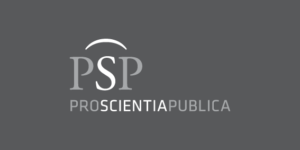COMBINED THERAPY FOR PATIENTS AFTER ISCHEMIC STROKE FROM THE POINT VIEW OF COMPREHENSIVE REHABILITATION
DOI:
https://doi.org/10.15503/jecs2020.1.119.125Keywords:
stroke, cognitive therapy, combined therapy, psychomotor therapy, robotic therapy, social adaptability,Abstract
Aim. The main objective of the research was to find out the efficacy of the combined therapy suitable for patients after ischemic stroke (promoting social adaptability). The therapy itself is then focused on robotic, psychomotor and cognitive therapy.
Methods. 58 probands diagnosed with a stroke participated on the research (ischemic type I60-I69; ICD-10: International Classification of Diseases and Related Health Problems), out of which 49 were male patients ages between 50-55 and women between the age of 52–57. The data collection was finished in 2017-2018. Indicators were evaluated and tested firstly after the initiation of the combined therapy, then after 15 weeks of intensive therapy, which took place 4 times a week 50 minutes for each patient participating in the research.
Results. A statistically significant difference was recorded among all observed indicator areas (somatic, psychological, social and even cognitive), in which patients scored during the final testing significantly better results, than during the initial testing.
Conclusion. The results of the research point to the fact, that combined therapy of robotic, psychomotor and cognitive can have positive effect, and is suitable as a treatment for patients after ischemic stroke, regarding their productive age. Positive results have been therefore overt among all tested areas.
Downloads
References
Adamičová H. (2003). Rehabilitace po cévní mozkové příhodě Rehabilitation after Stroke. In: Kolektiv autorů (Eds.), Neurologie (pp. 20-36). Praha: Triton.
Ammann-Reiffer, C., Bastiaenen, C. H. G., Meyer-Heim, A. D., & van Hedel, H. J. A. (2017). Effectiveness of robot-assisted gait training in children with cerebral palsy: a bicenter, pragmatic, randomized, cross-over trial (PeLoGAIT). BMC pediatrics, 1 7(1), 64.
Dietz V. (2009). Body weight supported gait training: from laboratory to clinical setting. Brain Res Bull, 78 (1), 1-6.
Flemr, L. (2014). Pohybové aktivity ve vědě a praxi Physical Activities in Science and Practice. Praha: Karolinum Press.
Hátlová B, Fleischmann O, Chytrý V. (2017). Osobnost a aktivní životní styl seniorů ve věku 65-75 let praxi Personality and Active Lifestyle of Seniors Aged 65-75 Years of Practice. Psychologie a její kontexty, 8 (1), 41-53.
WHO. (2014). International Classification of Diseases (ICD-10). Geneva: WHO.
World Health Organization. (2007). International Classification of Functioning, Disability, and Health: Children & Youth Version: ICF-CY. World Health Organization.
Konečný, P., Vysoký, R., Elfmark, M., & Urbánek, K. (2017). Effects of Targeted Orofacial Rehabilitation in Patients after Stroke with Speech Disorders. Česká a Slovenská Neurologie a neurochirurgie, 80 (3), 316-322.
Šaňák, D. (2018). The twilight of cryptogenic ischaemic stroke – cardio-embolism is the most frequent cause. Česká a Slovenská Neurologie a neurochirurgie, 81 (3), 290-297.
Siverová J., & Bužgová, R. Reminiscence v péči o seniory s demencí. (2016). Česká a Slovenská Psychiatrie, 112 (2).
Školoudík, D., Fadrná, T., Sedláková, M., Ressner, P., Bar, M., Zapletalová, O., & Kaňovský, P. (2007). Změny kognitivních funkcí u pacientů s akutní cévní mozkovou příhodou testovaných pomocí Mini-Mental State Examination a Clock Drawing Test. Česk Slov Neurol, 103 (4), 382-387.
Tomek, A., Bar, M., Herzig, R., Mikulík, R., Neumann, J., Šaňák, D., & Václavík, D. (2017). The impact of nationwide centrally organized stroke care system on recanalization rates: Czech Republic experience. European Stroke Journal, 2(1_suppl), 59-60.
Valenta, M., Michalík, J., & Lečbych M. (2010). Mentální postižení: v pedagogickém, psychologickém a sociálně-právním kontextu Mental Disability: in a Pedagogical, Psychological and Socio-Legal Context. Praha: Grada.
Vostrý, M. (2018). Selected opportunities for access to geriatric clients from the perspective of assisting professions. Journal of Education Culture and Society, 8 (1), 89-95.
Vostrý, M., Fischer, S., & Žukov, I. (2019). Podpora sociální adaptability osob s Alzheimerovou chorobou lehkého typu Promoting the Social Adaptability of People with Light Type Alzheimer's Disease. Česká a Slovenská psychiatrie, 115 (4); 174-178.
Downloads
Published
Issue
Section
License
CC-BY
Authors retain copyright and grant the journal right of first publication with the work simultaneously licensed under a Creative Commons Attribution License that allows others to share the work with an acknowledgement of the work's authorship and initial publication in this journal. All authors agree for publishing their email adresses, affiliations and short bio statements with their articles during the submission process.




